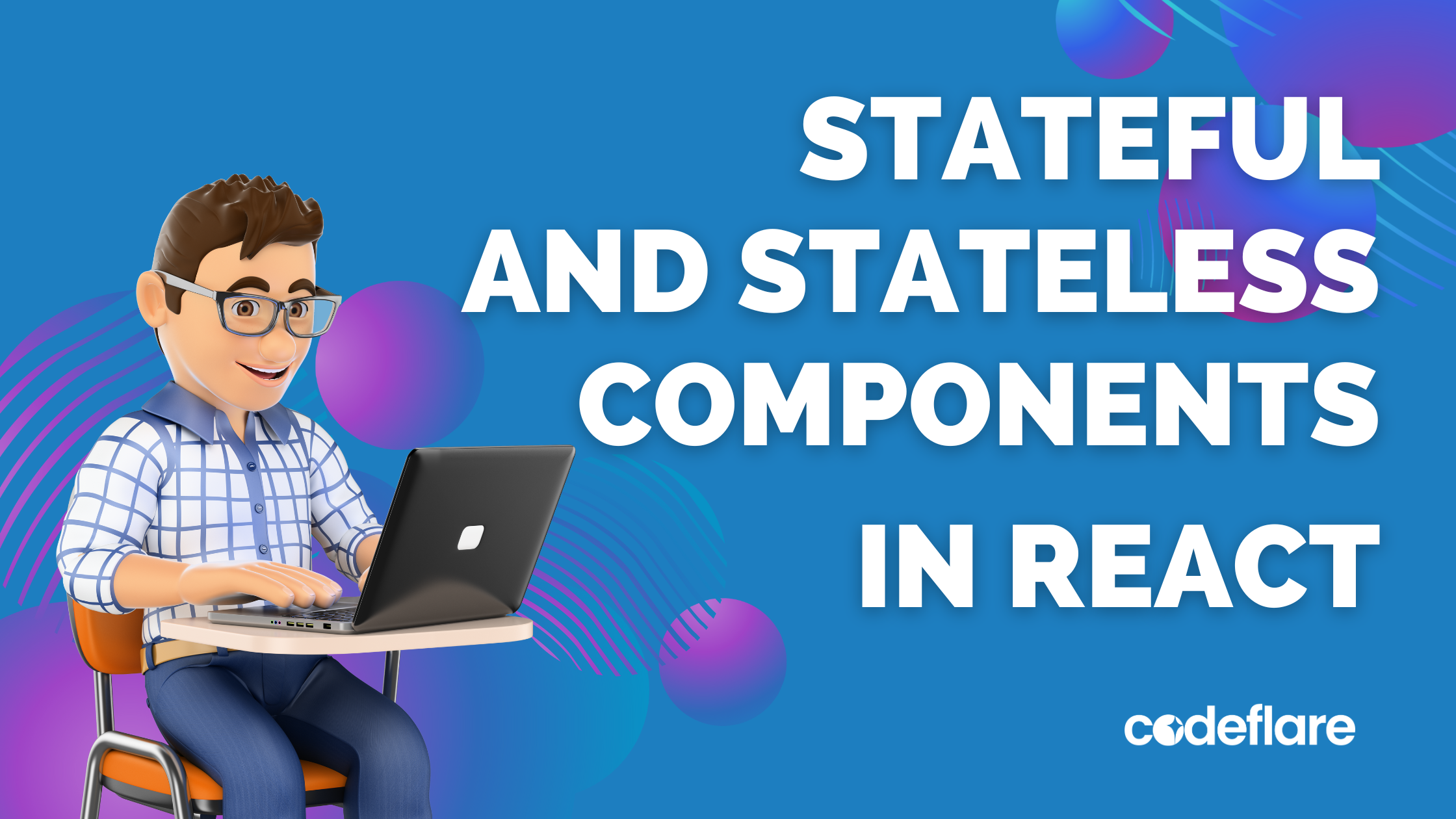
React is a popular JavaScript library for building user interfaces, and it revolves around the concept of components. Components are the building blocks of React applications, and they can be classified into two main types: stateful and stateless components. In this article, we’ll delve into the differences between these two types of components and provide coding examples to illustrate their usage.
Stateful Components
Stateful components, as the name suggests, manage state. State in React represents the data that a component can maintain and update over time. Stateful components are created using JavaScript classes that extend the React.Component class or by using the useState hook in functional components (introduced in React 16.8).
Let’s look at an example of a stateful component using the class syntax:
import React, { Component } from 'react';
class Counter extends Component {
constructor(props) {
super(props);
this.state = {
count: 0
};
}
incrementCount = () => {
this.setState({ count: this.state.count + 1 });
};
render() {
return (
<div>
<h1>Counter: {this.state.count}</h1>
<button onClick={this.incrementCount}>Increment</button>
</div>
);
}
}
export default Counter;
In this example, we have a Counter component that maintains a count state. The incrementCount method updates the count state when the button is clicked, and the count value is displayed in the component’s render method.
Stateless Components
Stateless components, on the other hand, do not manage state. They receive data via props and render UI based on that data. Stateless components are typically implemented as functional components, although they can also be written as class components using the PureComponent class or by extending React.Component.
Here’s an example of a stateless functional component:
import React from 'react';
const Greeting = (props) => {
return <h1>Hello, {props.name}!</h1>;
};
export default Greeting;
In this example, we have a Greeting component that receives a name prop and renders a greeting message. The component does not maintain any internal state; it simply renders UI based on the props it receives.
Choosing Between Stateful and Stateless Components
When deciding whether to use a stateful or stateless component, consider the following guidelines:
- Stateful Components: Use stateful components when you need to manage and update state within the component. Stateful components are suitable for components that require user interaction, data fetching, or complex UI logic.
- Stateless Components: Use stateless components for presentational purposes, where the component’s UI is solely based on the props it receives. Stateless components are lightweight and reusable, making them ideal for rendering static content or UI elements.
In practice, React applications often consist of a combination of stateful and stateless components, with stateful components managing the application’s state and passing data down to stateless components for rendering.
Conclusion
In summary, stateful and stateless components are fundamental concepts in React development. Stateful components manage internal state and are created using class components or hooks, while stateless components are purely presentational and render UI based on props. Understanding the differences between these two types of components is essential for building maintainable and efficient React applications.
By leveraging the strengths of both stateful and stateless components, developers can create robust and scalable React applications that effectively manage state and render dynamic user interfaces.
How to properly secure your PHP Application



